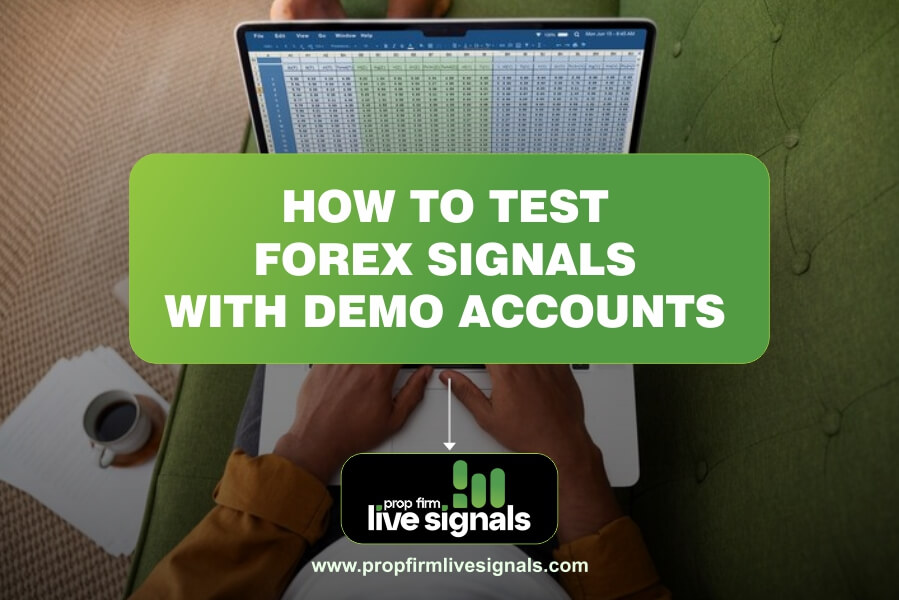Understanding Forex Signals
Forex signals, in general, refer to trade recommendations or alerts to buy or sell a currency pair. Forex signals result from market analysis and provide entry and exit points, as well as stop-loss levels, helping traders make decisions without detailed analysis. They guide traders in real time, allowing for greater market gains with less effort and time.
Forex signals are usually generated by professional traders, analysts, or automated systems based on technical, fundamental analysis, or both. They can become a great tool for both rookie and professional traders to refine their trading methodology by minimizing risks and increasing profitability.
Types of Forex Signals
Manual Forex Signals
Manual forex signals are provided by live analysts or expert traders, who study the current market situation, apply their experience, and give recommendations for trading according to their judgment about the prevailing trends in the market. These signals are most often based on either fundamental analysis, technical indicators, or even both. The trader has to decide when to give the signal, adding the human touch to the decision-making process.
Automated Forex Signals
The automated forex signals are generated by the computer algorithms or trading bots that perform high-speed analysis of market data and technical indicators. These systems then automatically generate signals based on predefined rules or parameters without interference from any human factor. Most of the time, automated signals use AI, machine learning, or algorithmic trading strategies to help in the identification of patterns and opportunities.
Sources of Forex Signals
Signal Services
A signal service is a third-party company that sends forex signals for either a subscription or freely. These can be operated by professional traders, trading companies, or fully automated platforms. These will send their subscribing traders alerts through email, SMS, or their mobile apps. A number of popular signal services also provide ancillary services such as market analysis and insight into trading.-
Trading Platforms
Many web-based trading systems, like MetaTrader, offer integrated signal services or allow subscriptions to third-party providers. These tools typically support both manual and automated signals, enabling users to select options that match their trading style. Integration with these systems facilitates quick transaction execution based on the provided signals, allowing traders to swiftly respond to market changes.
Social Trading Networks
Social trading networks like eToro enable traders to follow and copy experienced traders’ actions. These networks offer a visual representation of top traders’ strategies, allowing users to automatically adopt their methods, thus combining forex signals with social interaction. Understanding the available forex signals and their sources helps traders choose the best approach for their style and market conditions.
Definition Of A Demo Account
A Forex demo account is a practice environment, essentially a mock setup, where one can try their hand at Forex trading without exposure to any real money. It emulates a live trading account by granting access to real-time market data, charting, and a variety of trading instruments. It’s more or less a field in which you can practice trading, play with various approaches, and have an idea about how the market works without worrying about money loss.
Differences Between Demo And Live Accounts
A demo account is a kind of “trading simulator”; you practice your trading skills using fake money. You can practice buying and selling stocks, options, futures, currencies, and more without losing one penny. This is a great way to test your trading strategies and get a feel for how the markets work without chalking up losses.
The difference when trading on a live account, however, is that you are using real money in markets and the eventual consequences of it are very real. If you make a smart trade, you have the potential to make real profits. On the other hand, if you make a bad trade, you potentially might lose real money.
Setting Up a Demo Account
Setting a demo account is one of the major steps that any forex trader has to go through in order to have hands-on practice of this type of trade without going through any financial crisis. Generally speaking, the following steps may be considered while setting up a demo account:
Choose a Forex Broker
Research several different forex brokers that offer demo accounts. Find some good reputed brokers with good reviews, reliable customer support, and an easy-to-use trading platform. Check out the features of this demo account: the virtual amount of funds, available trading instruments, and functionality of the platform.
Visit the Broker’s Website
Check the homepage, or account option menu, to see an option that allows you to open a demo account.
Sign up with the Registration Form
Fill in the registration form by putting your name, email, phone, and your preferred account type. Some broker’s may require extra information to validate the identity of an individual. Choose Your Account Settings: You would need to choose a base currency, leverage options, and amount of virtual funds that you wish to begin with in your demo account.
Download the trading platform
Most brokers have different trading platforms that they have developed or integrated, including MetaTrader 4, MetaTrader 5, and their own proprietary software. Choose the one you prefer: If your platform is downloadable, some downloading instructions will pop up that you should follow to download the platform onto your computer. You may also have an option to use a web-based platform.
Log in to Your Demo Account
Once the registration is over, you will be mailed the login credentials in the form of a username and password. Access the trading platform with the help of the above-mentioned credentials. Take some time to get accustomed to the features, charts, tools, and resources of the trading platform. Familiarizing yourself with the trading platform will enrich your trading experience, which in turn will help you.
Trade on Virtual Funds
Begin practicing trades using either forex signals or your own strategies. Monitor the trade, reflect on performance, and make notes of what does and doesn’t work. Demo accounts will be useful for testing trading strategies, testing risk management, or making a trading plan without the risk of possible losses.
Testing of Forex Signals on a Demo Account
The testing of forex signals on a demo account is one important step in the process taken by traders who seek to know how their strategies will add up without losing their real money. Primarily, the demo account should be able to provide as realistic conditions as one operates under when real trading. Here’s a preview of what it entails to test forex signals on a demo account:
How to Choose the Right Signals
First of all, you’ll want to pick out the signals that you want to test. You can research a few different signal providers and then select those with a record of solid performance. Consider things like previous performance history, accuracy, and type of signal-manual or automated.
Trade Execution
Once the signals have been chosen, it’s time to begin trading. Act upon recommendations that will be provided in these selected signals. Besides taking proper risk management practices, follow entry and exit points recommended by the signals. Observe trades closely to understand how these signals will work in real-time market conditions.
Analyzing results
After having executed the trades, the results need to be analyzed. When maintaining a trading journal, date each trade, note the signal and its outcome, and record relevant market conditions. Key performance metrics to consider include win rate, profit/loss ratio, and signal consistency. This approach helps you identify what works and what doesn’t in your strategy.
Strategies Adjustment
You may modify your trading strategies in line with the finding outcome. When any of the signals turns out to be successfully replicated time after time, you adopt it into your general trading plan. If any of the signals happens to perform under expectations, see whether you should drop them or work on redeveloping them for better returns.
Pros And Cons Of Testing Forex Signals With Demo Accounts
Testing forex signals using demo accounts has immense benefits to the traders with some few disadvantages. Proper understanding of these will help the traders in making appropriate decisions on how best to use the demo account in their journey within the trade world.
Pros Of Testing Forex Signals With Demo Accounts
Real-time Market Conditions
Demo accounts emulate live market conditions; hence, traders can see the real-time performance of forex signals as it would occur in a live environment. It is very vital in determining the reliability and accuracy of different signals toward making the right decisions.
Skill Development
It allows traders to practice their skills in placing trades, analyzing market trends, and testing various strategies. Such training would further their knowledge of technical analysis, risk management, and trading psychology more than if one were under live trading pressure.
Performance Evaluation
Through demo accounts, traders can systematically assess the effectiveness of different forex signals. They can monitor the performance metrics like win rates, risk-to-reward ratios, and overall profitability that will define which signals tend to produce consistent results.
Confidence Building
The ability to successfully make profits from tested signals will boost a trader’s confidence. With increased confidence, decision-making becomes easier and thus, it is easier to transition into live trading since the anxiety that normally comes with trading real money is minimized.
Cons Of Testing Forex Signals With Demo Accounts
Lack of Emotional Pressure
There is no financial risk when demo trading; there may be no emotional risk either. Traders may become overconfident in the ability to take that demo success and translate it effectively into live trading, which most of the time is full of emotional and psychological challenges.
Different Market Conditions
These demo accounts are only playhouses of real trading platforms. They cannot consider factors such as slippage, spread, or delays in execution, which happen in a real market. These differences will create unrealistic expectations when traders start to engage in live trading.
Lack of Experience with Actual Money Management
Practicing with virtual money cannot replace one’s experience in managing one’s emotions, making quick decisions, and experiencing losses. A trader who has never been through these aspects may be found wanting in live performance.
Time Constraints
Some of the traders will get stuck in a demo account, often getting comfortable spending a lot of time with it and never going live. This comfort makes them complacent and delays overall development as a trader, therefore blocking your true potential to take advantage of the markets.
Frequently Asked Questions (FAQs)
Can I make real profits on a demo account?
- No, you cannot make real profits on a demo account. The funds used in demo accounts are virtual and do not represent real money. However, successful demo trading can indicate a strong understanding of the market and a well-developed trading strategy, which are crucial for achieving profitable trading in live markets.
Should You Pay for Forex Signals?
- Whether or not you should pay for forex signals depends on your individual trading goals, budget, and level of experience. While paid signal services may offer more comprehensive analysis and support, there are also reputable sources that provide free signals. It’s crucial to weigh the pros and cons and choose a service that aligns with your needs.




